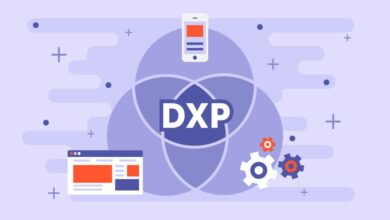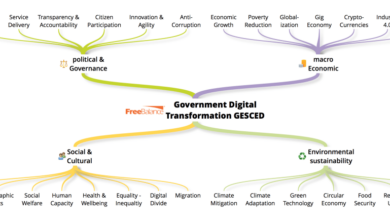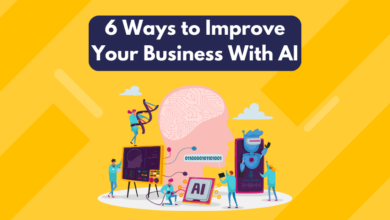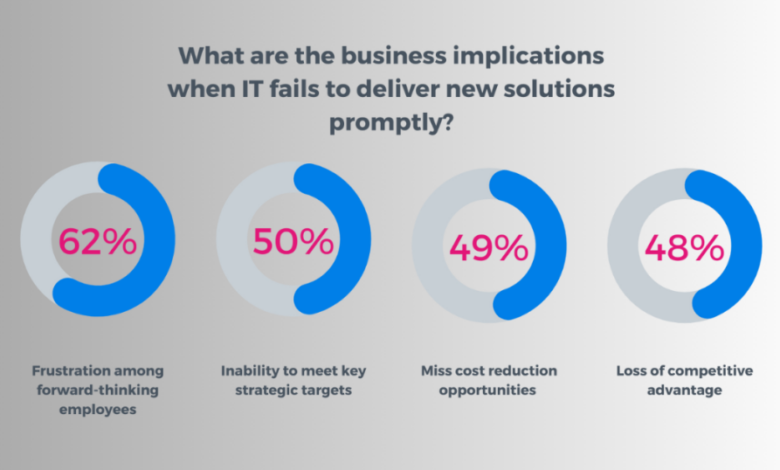
How to Empower Citizen Developers to Accelerate Innovation
How to empower citizen developers to accelerate innovation is a question increasingly crucial for organizations seeking a competitive edge. This isn’t just about giving employees new tools; it’s about fostering a culture of innovation where everyone feels empowered to contribute. By providing the right training, support, and governance, companies can unlock a wealth of untapped potential, leading to faster development cycles, improved collaboration, and ultimately, more successful products and services.
This guide explores the key strategies and best practices for successfully building and nurturing a thriving citizen development program.
We’ll delve into the practical aspects, from selecting the right low-code/no-code platforms and designing effective training programs to establishing robust governance structures and measuring the impact of your initiatives. We’ll also examine real-world examples of successful citizen development programs, highlighting both their triumphs and the challenges they overcame. By the end, you’ll have a clear roadmap for empowering your citizen developers and transforming your organization’s innovation capabilities.
Defining Citizen Development
Citizen development is empowering non-professional developers, often business users with a basic understanding of technology, to build and deploy applications to solve business problems. It’s about leveraging the existing talent within an organization to accelerate innovation and bridge the gap between IT and business units. This approach dramatically reduces the backlog of IT requests, leading to faster deployment of solutions and increased agility.Citizen development offers significant benefits, including faster application delivery, reduced IT backlogs, increased business agility, and improved employee engagement.
By enabling business users to create solutions tailored to their specific needs, organizations can quickly adapt to changing market demands and optimize internal processes. This approach also fosters a culture of innovation and empowers employees to take ownership of their work.
Examples of Successful Citizen Development Initiatives
Several organizations have successfully implemented citizen development programs, realizing tangible improvements in efficiency and innovation. For instance, a large financial institution used a low-code platform to empower its customer service representatives to build applications for automating routine tasks, resulting in a significant reduction in processing times and improved customer satisfaction. In another example, a retail company enabled its marketing team to create and deploy personalized customer campaigns using a no-code platform, leading to a noticeable increase in sales conversions.
These successes demonstrate the power of citizen development to drive real business value.
Best Practices for Establishing a Citizen Development Program
Establishing a successful citizen development program requires careful planning and execution. A crucial first step is to define clear governance policies and guidelines. This includes establishing clear roles and responsibilities, defining acceptable use cases, and setting standards for application security and data governance. A robust training program is essential to equip citizen developers with the necessary skills and knowledge.
This might involve providing access to online courses, workshops, and mentorship opportunities. Finally, providing ongoing support and guidance is critical to ensure the success and sustainability of the program. This includes providing access to technical support, best practice documentation, and a community forum for citizen developers to collaborate and share knowledge. A well-structured governance framework, comprehensive training, and continuous support are vital for mitigating risks and maximizing the benefits of citizen development.
Identifying Suitable Tools and Technologies: How To Empower Citizen Developers To Accelerate Innovation
Empowering citizen developers requires providing them with the right tools. The beauty of citizen development lies in its accessibility; low-code/no-code platforms are the key to unlocking this potential. These platforms significantly reduce the need for extensive coding knowledge, enabling individuals with varying technical skills to build applications and automate processes. Choosing the right platform, however, depends on several factors, including the complexity of the project, the organization’s existing infrastructure, and the skillset of the citizen developers.
Low-Code/No-Code Platform Options
A wide array of low-code/no-code platforms cater to diverse needs and preferences. Selecting the appropriate platform involves careful consideration of its features, capabilities, and alignment with specific project requirements. Understanding the strengths and weaknesses of different platforms is crucial for successful citizen development initiatives.
Comparison of Popular Platforms
Let’s examine three popular platforms: Mendix, Appian, and Microsoft Power Apps. Each offers a unique set of capabilities, making them suitable for different types of projects and developer skill levels.Mendix is known for its robust model-driven development approach, enabling rapid application creation with a strong focus on enterprise-grade features. Its visual modeling tools allow for complex application logic to be designed without extensive coding.
Appian excels in its process automation capabilities, ideal for streamlining workflows and integrating disparate systems. Its strong focus on business process management (BPM) makes it a powerful tool for organizations looking to optimize their operations. Microsoft Power Apps, integrated within the Microsoft ecosystem, offers ease of use and seamless integration with other Microsoft products like SharePoint and Excel. Its strength lies in its accessibility and the vast library of pre-built connectors and templates, speeding up development for simpler applications.
Platform Comparison Table
| Platform | Pricing (Approximate Starting Point) | Ease of Use | Scalability |
|---|---|---|---|
| Mendix | Enterprise-level pricing; varies greatly based on features and users. | Moderate learning curve; requires understanding of model-driven development. | High; designed for enterprise-level deployments. |
| Appian | Enterprise-level pricing; similar to Mendix in variation. | Moderate learning curve; requires understanding of BPM concepts. | High; built for robust and scalable enterprise applications. |
| Microsoft Power Apps | Subscription-based; offers various tiers with different feature sets. Relatively affordable entry point. | Easy; intuitive interface with a gentle learning curve. | Moderate; scalability depends on the chosen plan and application complexity. |
Empowering Citizen Developers Through Training and Support
Successfully launching a citizen development initiative hinges not just on selecting the right tools, but also on empowering your citizen developers with the knowledge and support they need to thrive. A well-structured training program, coupled with a strong mentorship network, is crucial for fostering innovation and ensuring the long-term success of your program.A robust training program equips citizen developers with the practical skills and best practices necessary to build effective and secure applications.
It also cultivates a culture of collaboration and continuous learning, preventing potential pitfalls and maximizing the value of citizen development.
Citizen Developer Training Curriculum
This curriculum should be modular and adaptable to different skill levels and experience backgrounds. The core components should cover fundamental concepts, practical application, and best practices for secure development. A blended learning approach, combining online modules with hands-on workshops, is highly effective.
- Module 1: Introduction to Citizen Development and Low-Code/No-Code Platforms. This module introduces the concept of citizen development, its benefits, and the available platforms. It covers platform selection criteria and basic navigation.
- Module 2: Fundamental Programming Concepts. This module introduces core programming concepts like variables, data types, loops, and conditional statements, adapted to the specific low-code/no-code platform being used. Practical exercises reinforce these concepts.
- Module 3: Data Modeling and Database Management. This module covers designing efficient databases, understanding data relationships, and working with APIs to integrate data from various sources. Hands-on exercises focus on creating and querying databases within the chosen platform.
- Module 4: Building Applications. This module focuses on the practical application of learned skills, guiding participants through building a simple application from start to finish. This includes designing the user interface, implementing business logic, and testing the application.
- Module 5: Security Best Practices. This crucial module covers security considerations in citizen development, including data security, authentication, and authorization. It emphasizes the importance of secure coding practices and adherence to organizational security policies.
- Module 6: Application Deployment and Maintenance. This module explains the process of deploying applications, monitoring their performance, and implementing updates and maintenance procedures. It also covers version control and collaboration tools.
Mentorship and Community Building
Establishing a strong mentorship program is vital for citizen developers’ success. Experienced developers or IT professionals can guide newcomers, provide expert advice, and address challenges as they arise. This fosters a collaborative environment where knowledge is shared and best practices are reinforced.A thriving community further enhances the citizen development initiative. This can be achieved through regular meetups, online forums, or dedicated collaboration spaces.
These platforms facilitate knowledge sharing, peer-to-peer support, and the exchange of best practices, fostering a sense of belonging and mutual support among citizen developers. For example, a company could establish a Slack channel dedicated to citizen development, allowing developers to ask questions, share tips, and collaborate on projects.
Supporting Resources for Citizen Developers, How to empower citizen developers to accelerate innovation
Providing readily accessible resources is crucial for empowering citizen developers. This includes comprehensive documentation, tutorials, and active online forums.
- Comprehensive Documentation: Well-structured and easily searchable documentation for the chosen low-code/no-code platform is essential. This documentation should cover all aspects of the platform, from basic functionalities to advanced features.
- Interactive Tutorials: Step-by-step tutorials, incorporating video demonstrations and hands-on exercises, can significantly improve learning and retention. These tutorials should cover various aspects of application development and address common challenges.
- Active Online Forums and Communities: A vibrant online community provides a platform for citizen developers to ask questions, share knowledge, and receive support from peers and experienced developers. This can be a dedicated forum, a Slack channel, or a similar online platform.
Governance and Security Considerations
Citizen development, while offering incredible speed and agility to innovation, introduces new challenges to established IT governance and security frameworks. Successfully integrating citizen development requires a proactive approach that balances empowerment with robust controls, ensuring both efficiency and safety. Ignoring these considerations can lead to significant risks, undermining the very benefits citizen development promises.Establishing clear governance guidelines is paramount for managing the risks associated with citizen development.
Without these guidelines, projects can quickly spiral out of control, leading to inconsistencies in data quality, security vulnerabilities, and a general lack of integration with existing IT infrastructure. This section will explore the key aspects of establishing effective governance and mitigating security risks in a citizen development environment.
Governance Guidelines for Citizen Development Projects
Effective governance starts with clearly defined roles and responsibilities. This includes identifying who can initiate projects, who approves them, and who is responsible for ongoing maintenance and support. A well-defined approval process, incorporating risk assessments and impact analyses, is crucial. This process should Artikel the criteria for project approval, including factors such as data sensitivity, potential impact on existing systems, and compliance with relevant regulations.
Furthermore, a comprehensive catalog of approved tools and technologies should be established to ensure consistency and compatibility. This catalog will help prevent shadow IT, where employees use unauthorized tools that can introduce significant security risks. Finally, regular audits and reviews of citizen development projects are essential to ensure compliance with established guidelines and to identify potential areas for improvement.
Security Risks Associated with Citizen Development and Mitigation Strategies
Citizen developers, while often highly skilled in their domain, may lack formal training in security best practices. This lack of training can lead to the creation of applications with vulnerabilities that can be exploited by malicious actors. Potential risks include insecure data storage, inadequate authentication and authorization mechanisms, and the use of outdated or vulnerable software components. To mitigate these risks, organizations should implement comprehensive security training programs for citizen developers.
This training should cover topics such as secure coding practices, data security, and identity and access management. Furthermore, automated security testing tools can be integrated into the citizen development lifecycle to identify and address vulnerabilities early in the development process. Regular security audits and penetration testing can further enhance the security posture of citizen-developed applications. The use of a secure development lifecycle (SDLC) framework, adapted for citizen development, provides a structured approach to incorporating security considerations throughout the entire development process.
Integrating Citizen Development with Existing IT Security Protocols
Integrating citizen development initiatives with existing IT security protocols requires a cohesive strategy. This includes aligning citizen development practices with the organization’s overall security policy, ensuring compliance with relevant regulations, and integrating citizen-developed applications with existing security infrastructure. For example, citizen-developed applications should be subject to the same security testing and vulnerability scanning processes as applications developed by professional IT teams.
Data access should be controlled through existing identity and access management (IAM) systems, ensuring that only authorized users can access sensitive data. Integration with existing monitoring and logging systems allows for real-time visibility into the performance and security of citizen-developed applications. This integrated approach ensures that citizen development initiatives enhance, rather than compromise, the overall security posture of the organization.
Measuring the Impact of Citizen Development
Successfully implementing a citizen development program isn’t just about empowering employees to build apps; it’s about demonstrably improving business outcomes. Measuring the impact allows you to justify continued investment, refine your strategies, and showcase the value of this initiative to stakeholders. A robust framework is crucial for understanding the true return on investment.
A comprehensive evaluation requires a multi-faceted approach, tracking both qualitative and quantitative data. This goes beyond simply counting the number of apps built; it delves into the impact those apps have on efficiency, innovation, and overall business goals. By carefully selecting and monitoring key performance indicators (KPIs), organizations can gain a clear picture of their citizen development program’s success.
A Framework for Evaluating Citizen Development Success
This framework suggests a three-stage approach: pre-implementation assessment, ongoing monitoring, and post-implementation review. The pre-implementation stage focuses on defining clear objectives and identifying baseline metrics. Ongoing monitoring involves tracking KPIs throughout the program’s lifecycle. Finally, a post-implementation review assesses the overall impact and identifies areas for improvement.
Key Performance Indicators (KPIs) for Citizen Development
Tracking the right KPIs is essential. These metrics should align with the overall business objectives and provide a clear picture of the program’s success. Consider these examples:
Before diving into specific KPIs, it’s vital to remember that these should be tailored to your specific business goals and the nature of your citizen development program. Generic metrics might not capture the nuances of your initiative, rendering the evaluation process less effective.
- Number of applications deployed: This provides a basic measure of productivity and adoption.
- Time saved through automation: Quantifies the efficiency gains achieved by automating previously manual processes. For example, if a citizen developer creates an app that automates data entry, track the time saved per employee and extrapolate to the total savings across the organization.
- Reduction in operational costs: This demonstrates the financial benefits of citizen development. For instance, an app that streamlines a supply chain process might reduce storage costs or transportation expenses.
- Increase in employee satisfaction: Empowered employees tend to be more engaged and satisfied. Surveys and feedback mechanisms can help quantify this impact.
- Number of innovative solutions implemented: This captures the program’s contribution to innovation. Track the number of new ideas generated and successfully implemented via citizen development.
- Improved customer satisfaction: Citizen-developed applications directly impacting customer interactions can lead to measurable improvements in customer satisfaction scores (CSAT).
Quantifying the Return on Investment (ROI) of Citizen Development
Calculating the ROI of citizen development requires a careful assessment of costs and benefits. Costs include training, tool licensing, and IT support. Benefits include increased efficiency, reduced operational costs, and improved employee satisfaction.
A simple ROI calculation can be expressed as:
ROI = (Total Benefits – Total Costs) / Total Costs
For example, if a citizen development program costs $50,000 annually and generates $100,000 in cost savings and increased revenue, the ROI would be 100%. However, accurately calculating the total benefits often requires careful consideration of both tangible and intangible factors, which may necessitate more complex ROI models.
It is crucial to note that accurately quantifying the intangible benefits, such as improved employee morale and increased innovation, can be challenging. Qualitative data gathering, such as employee surveys and focus groups, can help to supplement quantitative data and provide a more complete picture of the ROI.
Fostering Innovation Through Citizen Development
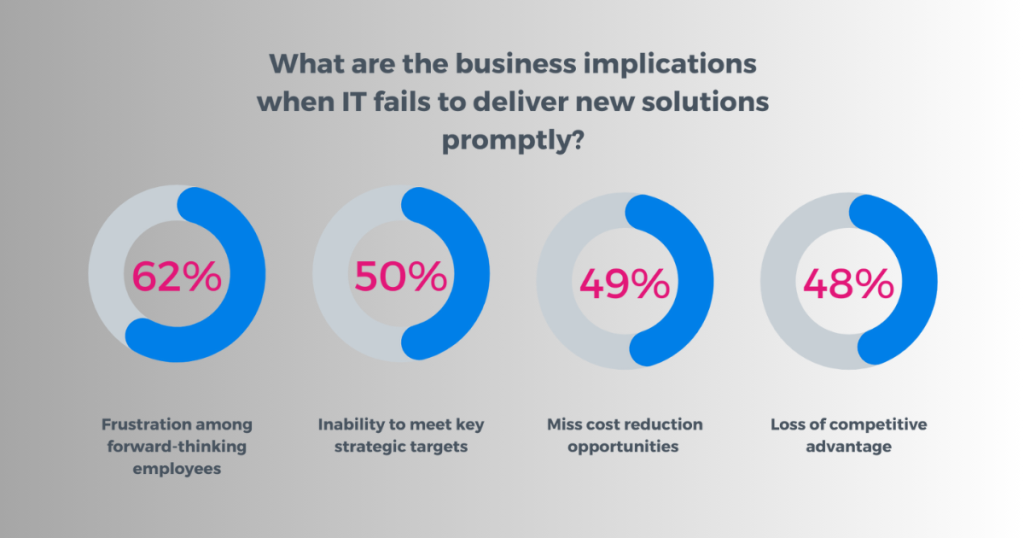
Citizen development isn’t just about building apps; it’s about fundamentally shifting how organizations innovate. By empowering employees to create solutions, businesses unlock a wealth of untapped creativity and accelerate the development process, leading to faster time-to-market for new products and services and a more agile response to evolving market demands. This democratization of development fosters a culture of innovation where ideas are readily translated into tangible results.Citizen development significantly shortens the development lifecycle.
Empowering citizen developers is key to faster innovation; giving them the right tools is crucial. One exciting avenue is exploring platforms that blend low-code and pro-code approaches, like those discussed in this insightful article on domino app dev the low code and pro code future. By providing access to such powerful yet accessible development environments, we unlock a wave of creative problem-solving and accelerate the delivery of innovative solutions.
Ultimately, empowering these citizen developers is about fostering a culture of agile development.
Instead of relying solely on overburdened IT departments, citizen developers can quickly prototype and deploy solutions addressing immediate business needs. This agility allows companies to experiment with new ideas, test market viability, and iterate based on user feedback far more rapidly than traditional methods. For example, a marketing team might quickly build a customized application to track campaign performance, gathering real-time data and adapting strategies on the fly, without waiting weeks or months for IT to develop a similar solution.
This rapid iteration is crucial in today’s fast-paced business environment.
Accelerated Product and Service Development
The speed at which citizen developers can build applications directly translates into faster product and service development. By leveraging low-code/no-code platforms, they can rapidly prototype and test new features, gather user feedback, and iterate on designs. This iterative approach minimizes the risk of investing significant resources in features that ultimately fail to resonate with the target audience. Consider a retail company using citizen developers to create a mobile app for in-store navigation and product discovery.
The iterative development process allows them to quickly adapt the app based on customer feedback, resulting in a more user-friendly and successful product launch.
Improved Interdepartmental Collaboration and Communication
Citizen development breaks down silos between different departments. When employees from various teams collaborate on building solutions, they gain a deeper understanding of each other’s roles, challenges, and perspectives. This fosters improved communication and collaboration, leading to more integrated and effective solutions. For instance, a sales team collaborating with a marketing team on a lead management application can streamline the process and enhance efficiency through a shared understanding of the sales funnel and lead nurturing strategies.
This shared ownership and collaborative approach enhances the overall effectiveness of the solution.
Solving Complex Business Problems
Citizen developers, armed with a deep understanding of their respective business domains, are uniquely positioned to identify and solve complex business problems. They possess the domain expertise to define requirements, design solutions, and test their effectiveness. This often results in more effective and user-friendly solutions tailored to specific business needs. A finance team, for example, might use citizen development to build a customized reporting tool that streamlines financial analysis, improving accuracy and efficiency in a way that a generic, off-the-shelf solution might not be able to accomplish.
This tailored approach leads to significant improvements in productivity and decision-making.
Case Studies of Successful Citizen Development Initiatives
Citizen development initiatives, when properly implemented, can dramatically accelerate innovation within organizations. By empowering employees to build their own applications, companies can bypass lengthy IT backlogs and rapidly address business needs. Examining successful case studies reveals key strategies and best practices for maximizing the impact of citizen development.
Case Study 1: A Global Financial Institution Improves Customer Onboarding
A large multinational bank faced significant delays in its customer onboarding process. Manual data entry and disparate systems created bottlenecks and frustrated both customers and employees. To address this, the bank launched a citizen development program, equipping business analysts with low-code development platforms. These analysts, familiar with the onboarding process, built a streamlined application that automated data entry, integrated with existing systems, and provided real-time status updates.
The result was a 70% reduction in onboarding time, a significant improvement in customer satisfaction, and a substantial cost saving. The challenges included initial resistance from some IT staff concerned about security and data governance, which was addressed through rigorous training and the establishment of clear guidelines.
Case Study 2: A Retail Giant Optimizes Inventory Management
A major retail chain struggled with inaccurate inventory data, leading to stockouts and lost sales. Their IT department was overwhelmed with requests for custom inventory management tools. The company empowered its store managers, who possessed deep knowledge of local inventory needs, to use a no-code platform to build simple inventory tracking applications. These applications integrated with the existing point-of-sale system and provided real-time inventory visibility at the store level.
The company saw a 15% reduction in stockouts and a 10% increase in sales within six months. A key challenge was ensuring data consistency across different store locations, which was overcome by implementing standardized data templates and regular data validation checks.
Case Study 3: A Healthcare Provider Streamlines Patient Appointment Scheduling
A large healthcare provider experienced long wait times for patient appointments, leading to patient dissatisfaction and reduced efficiency. The IT department was unable to quickly develop a solution to address this problem. The provider launched a citizen development program focused on its administrative staff. Using a low-code platform, these staff members developed a new appointment scheduling application that integrated with the existing electronic health record system.
This application allowed patients to book appointments online, reducing wait times and improving patient satisfaction. The new system also allowed for better resource allocation, leading to a 20% increase in appointment slots filled. The biggest challenge was ensuring the application met strict HIPAA compliance regulations, which required careful planning and rigorous security measures.
Comparison of Approaches, Challenges, and Outcomes
All three case studies demonstrate the power of citizen development to address critical business challenges. Each organization used a different approach, selecting tools and technologies best suited to their specific needs and employee skillsets. However, all three faced similar challenges related to security, governance, and initial resistance from IT. The successful outcomes—reduced processing times, improved customer satisfaction, increased efficiency, and cost savings—highlight the significant potential benefits of empowering citizen developers.
| Case Study | Technology | Key Challenge | Outcome |
|---|---|---|---|
| Global Financial Institution | Low-code platform | IT resistance, security | 70% reduction in onboarding time |
| Retail Giant | No-code platform | Data consistency | 15% reduction in stockouts, 10% increase in sales |
| Healthcare Provider | Low-code platform | HIPAA compliance | Improved patient satisfaction, 20% increase in appointment slots filled |
Addressing Challenges in Citizen Development
Citizen development, while offering significant advantages, isn’t without its hurdles. Successfully implementing a citizen development program requires careful planning and proactive management to address potential challenges and ensure its long-term success. Ignoring these issues can lead to frustration, security breaches, and ultimately, the failure of the initiative.Common Challenges Faced by Organizations Implementing Citizen Development Programs
Resistance to Change and Promoting Adoption
Overcoming resistance to change is crucial for successful citizen development adoption. Many employees may be hesitant to adopt new tools or processes, fearing job displacement or an increased workload. Others might simply prefer established methods. To overcome this, organizations should clearly communicate the benefits of citizen development, emphasizing how it can empower employees, streamline workflows, and improve overall productivity.
Training programs should be comprehensive and engaging, and early successes should be widely publicized to build momentum and demonstrate the value proposition. Furthermore, a phased rollout, starting with pilot projects in specific departments, can help build confidence and address concerns before a full-scale implementation. Providing ongoing support and mentorship can also significantly aid adoption. A champion within each department can help alleviate concerns and provide hands-on assistance.
Managing Risks Associated with Shadow IT and Unauthorized Development
Shadow IT – the use of unsanctioned technology and applications within an organization – poses a significant risk in citizen development initiatives. Unauthorized development can lead to security vulnerabilities, data breaches, and compliance issues. To mitigate these risks, organizations should establish clear guidelines and governance frameworks for citizen development. This includes defining acceptable technologies, establishing approval processes for new applications, and implementing robust security measures.
Regular audits and monitoring of citizen-developed applications are essential to identify and address potential risks. Providing a secure and controlled environment for development, with appropriate access controls and version control systems, can also significantly reduce the risk of shadow IT. Clear communication of the risks associated with unauthorized development and the consequences of non-compliance are vital for deterring such activities.
Training should emphasize security best practices and the importance of adhering to organizational policies.
Lack of Skills and Training
A significant obstacle to successful citizen development is a lack of adequate skills and training among citizen developers. While many employees may possess some technical aptitude, they may lack the specific skills needed to build robust and secure applications. To address this, organizations should invest in comprehensive training programs that cover relevant technologies, development methodologies, and security best practices.
These programs should be tailored to different skill levels and incorporate hands-on exercises and real-world scenarios. Access to ongoing support and mentorship is also crucial, ensuring that citizen developers have the resources they need to overcome challenges and build high-quality applications. Organizations might consider partnering with external training providers or leveraging internal expertise to deliver effective training programs.
The Future of Citizen Development
Citizen development, already a transformative force in many organizations, is poised for even more significant growth and impact in the coming years. Driven by technological advancements and evolving business needs, the future of citizen development promises a more democratized, efficient, and innovative approach to software creation and problem-solving. This evolution will be shaped by emerging trends, particularly in artificial intelligence and its impact on the workplace.The convergence of several factors will significantly influence the trajectory of citizen development.
These include the increasing sophistication of low-code/no-code platforms, the wider adoption of AI-powered development tools, and the growing need for agility and rapid innovation in businesses across all sectors. The future will see a blurring of lines between professional developers and citizen developers, leading to more collaborative and efficient software development lifecycles.
Emerging Trends and Technologies Impacting Citizen Development
Several emerging trends are poised to reshape the landscape of citizen development. The rise of AI-assisted development environments, for instance, will significantly lower the barrier to entry for citizen developers. These environments will provide intelligent suggestions, automate repetitive tasks, and even generate code snippets based on natural language descriptions, thereby accelerating the development process and reducing the need for extensive coding expertise.
Another key trend is the increasing integration of citizen development platforms with other enterprise systems, facilitating seamless data exchange and collaboration across departments. This integration will enhance the efficiency and effectiveness of citizen development initiatives. Finally, the expansion of edge computing will empower citizen developers to build applications that operate closer to the data source, leading to improved performance and reduced latency.
The Role of Artificial Intelligence and Machine Learning in Citizen Development
AI and ML are set to revolutionize citizen development by automating many aspects of the software development lifecycle. Imagine AI-powered tools that can automatically generate user interfaces based on natural language descriptions, or that can predict and prevent potential errors in code before deployment. This level of automation will significantly increase the productivity of citizen developers, allowing them to focus on higher-level design and problem-solving tasks.
Furthermore, ML algorithms can analyze large datasets to identify patterns and insights that can inform the design and development of new applications, leading to more effective and data-driven solutions. For example, an AI-powered tool could analyze sales data to suggest improvements to an existing customer relationship management (CRM) application built by a citizen developer, resulting in improved sales conversion rates.
The Impact of Citizen Development on the Future of Work
Citizen development is not just changing how software is built; it’s fundamentally reshaping the future of work. By empowering non-technical employees to create their own applications, organizations can unlock a wealth of untapped potential. This leads to increased employee engagement and job satisfaction as individuals are given more autonomy and ownership over their work. Moreover, citizen development can foster a more agile and responsive work environment, allowing businesses to adapt quickly to changing market conditions.
The shift towards citizen development also means that IT departments can focus on more strategic initiatives, freeing them from the burden of handling a large volume of routine application requests. The overall effect is a more efficient, innovative, and empowered workforce. For instance, a marketing team using a citizen development platform to create a customized campaign tracking application can significantly reduce reliance on IT, allowing for faster campaign iterations and better results.
Last Recap
Empowering citizen developers isn’t just a trend; it’s a strategic imperative for organizations looking to thrive in today’s rapidly evolving business landscape. By carefully considering the key elements discussed – from selecting appropriate tools and establishing clear governance to providing ongoing support and measuring impact – businesses can unlock significant advantages. The journey to fostering a culture of citizen development requires commitment and planning, but the rewards—accelerated innovation, improved efficiency, and a more engaged workforce—make it a worthwhile investment.
Let’s unlock the power of your people and transform the future of your organization, one citizen developer at a time.
Frequently Asked Questions
What are the biggest risks associated with citizen development?
The biggest risks include data security breaches, compliance violations, and the creation of shadow IT systems that are difficult to manage and maintain. Proper governance and security protocols are essential to mitigate these risks.
How do I measure the ROI of a citizen development program?
Measure ROI by tracking metrics such as reduced development time, cost savings from using low-code/no-code platforms, increased employee productivity, and the number of successful applications deployed. Quantify the value of these improvements to determine the overall return.
How do I overcome resistance to change when implementing a citizen development program?
Address concerns proactively through clear communication, training, and showcasing early successes. Highlight the benefits for both individuals and the organization as a whole. Engage key stakeholders early in the process to build buy-in and support.
What if my organization lacks the internal expertise to support citizen developers?
Consider partnering with external consultants or leveraging online resources and communities to supplement internal expertise. Many low-code/no-code platforms also offer robust support and training resources.
